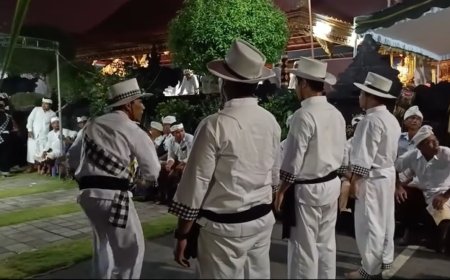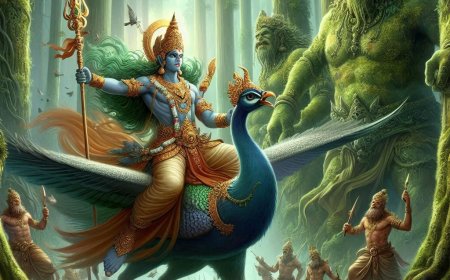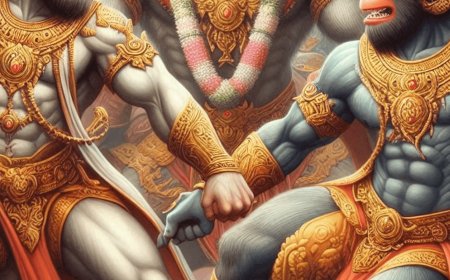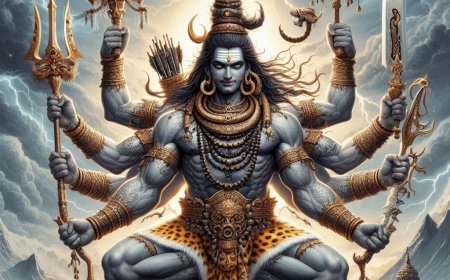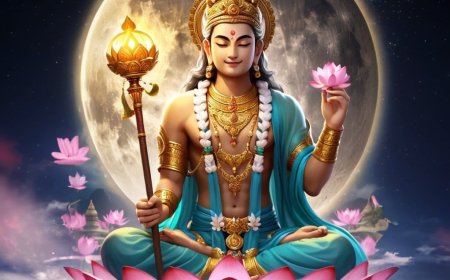The Weaver of Mahabharata's Fate : Vishnu in Vyasa
What if a human became a living witness to the greatest war in history and then poured it into one of the greatest epics in the world? Maha Rishi Vyasa, as an avatar of Vishnu, lived as an example and wise figure in imparting knowledge through the Vedas. So, what is the story of his life journey in fulfilling his duty as a model and proclaimer of Dharma?
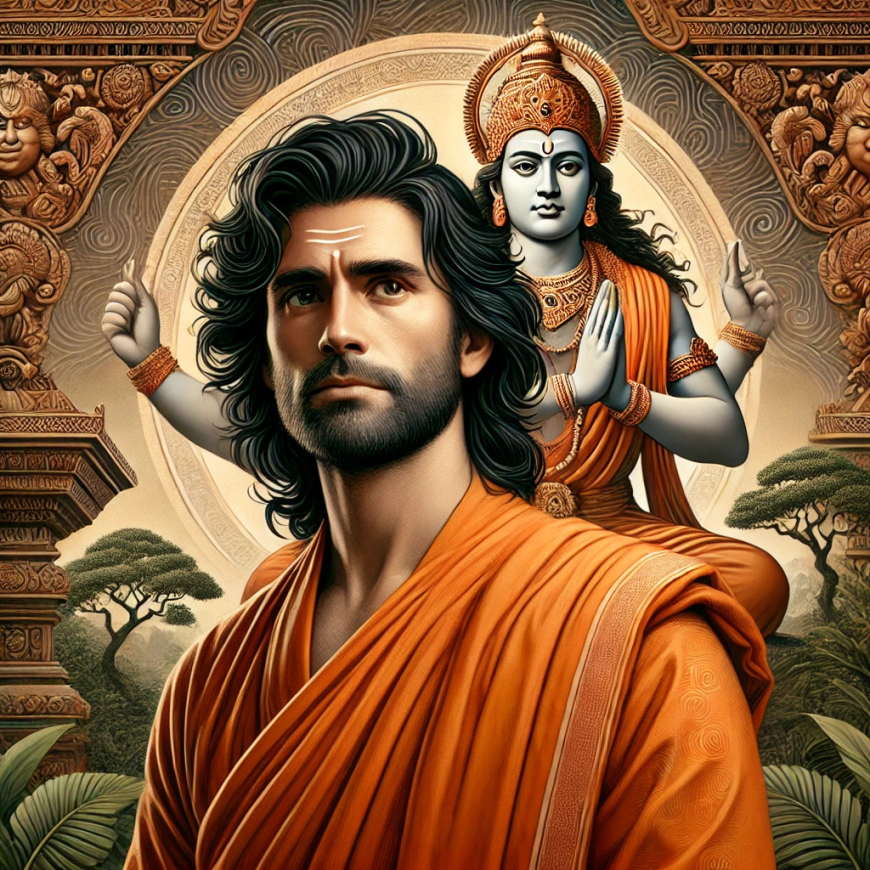
A sage named Parashara once accepted an offer from a fisherwoman named Satyavati to cross a river using her boat. During the journey, they conversed, and Satyavati shared about an illness she had, which caused her body to emit a foul odor. Feeling compassion and a sense of affection for her, Sage Parashara offered to heal her. Using his abilities, he cured her. Grateful for the cure, Satyavati also developed feelings for Sage Parashara. Eventually, the two married and lived on an island in the middle of the Yamuna River. They lived happily together, filled with joy and contentment.
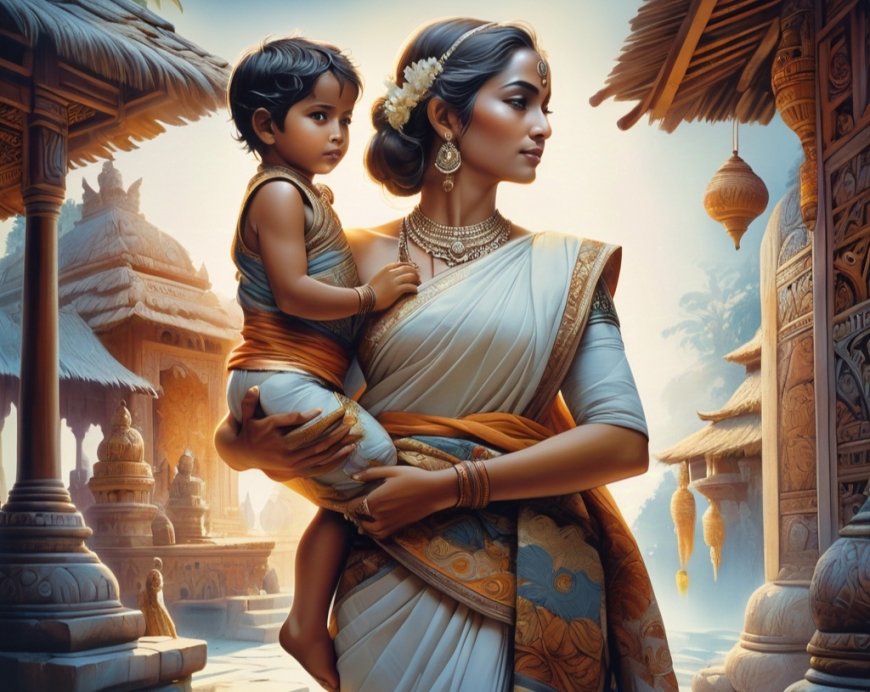
Satyawati with young Khrisna Dvaipayana (source : private collection)
They were blessed with a son named Krishna Dvaipayana, who later became known as Sage Vyasa. Vyasa would become one of the most renowned sages in the world, considered an incarnation or avatar of one of the protectors in the Trimurti, Lord Vishnu. He was believed to have the divine task of spreading knowledge and composing the great epic, the Mahabharata.
As he grew older, Krishna Dvaipayana followed in his father’s footsteps to become a sage. Endowed with wisdom from a young age, he became a highly respected sage, admired by his disciples. He was a role model who exemplified righteousness, always willing to help anyone regardless of caste or status.
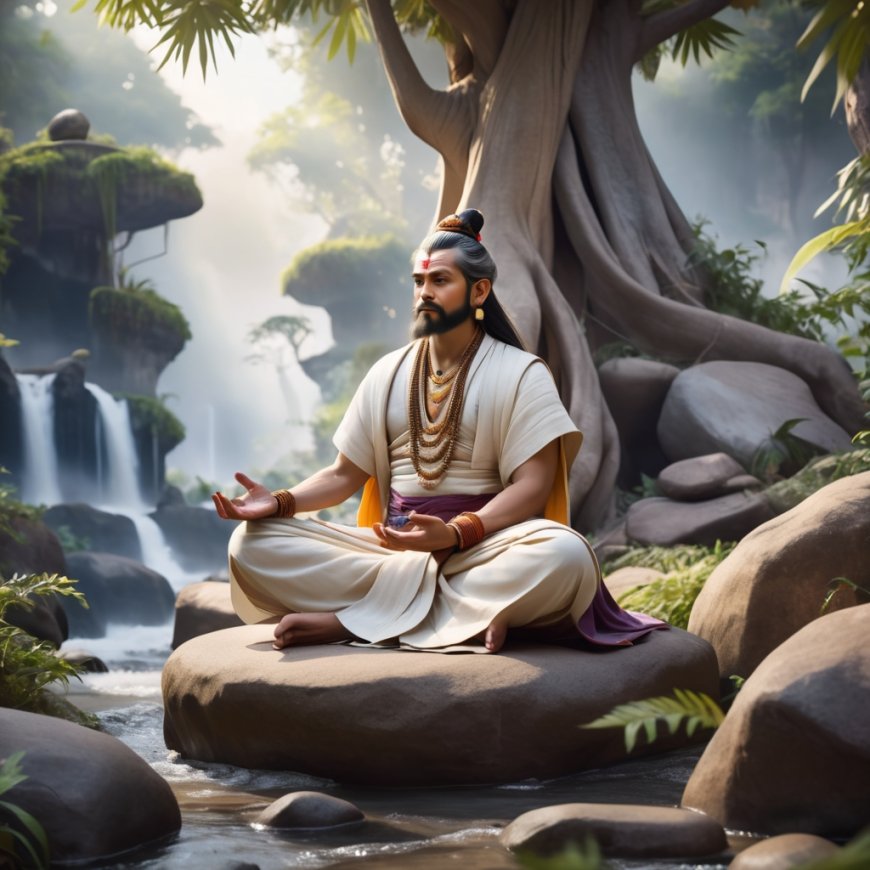
Krishna Dvaipayana become a Sage (source : private collection)
One of the most famous stories from Sage Vyasa’s life was his role in assisting the Kuru Dynasty. Satyavati, who had married King Shantanu of Hastinapura, requested Vyasa to bless her daughters-in-law, Princesses Ambika and Ambalika. Both were the widows of Prince Vichitravirya, who had died without leaving an heir to continue the royal lineage.
When the time came for the blessing, Princess Ambika was the first to meet Sage Vyasa. However, terrified by the sage’s powerful and awe-inspiring appearance, she closed her eyes, and as a result, her son Dhritarashtra, the father of the Kauravas, was born blind. Following her sister, Ambalika met Vyasa but was pale with fear, and thus her son Pandu, the father of the Pandavas, was born with a pale complexion. Unnerved and hesitant, the two princesses asked their maid to go in their place. The maid, showing no fear in the presence of the sage, received his blessing calmly. Consequently, her son Vidura was born, a man known for his wisdom and righteousness.
Later, Satyavati once again approached Vyasa, asking for his help so that King Dhritarashtra could have offspring. Seeing this as a noble task and a request from his mother, Vyasa agreed. He divided a piece of flesh born from Queen Gandhari into a hundred parts, placing each piece into a hundred jars. From each jar, a child was born, and they became known as the Kauravas.
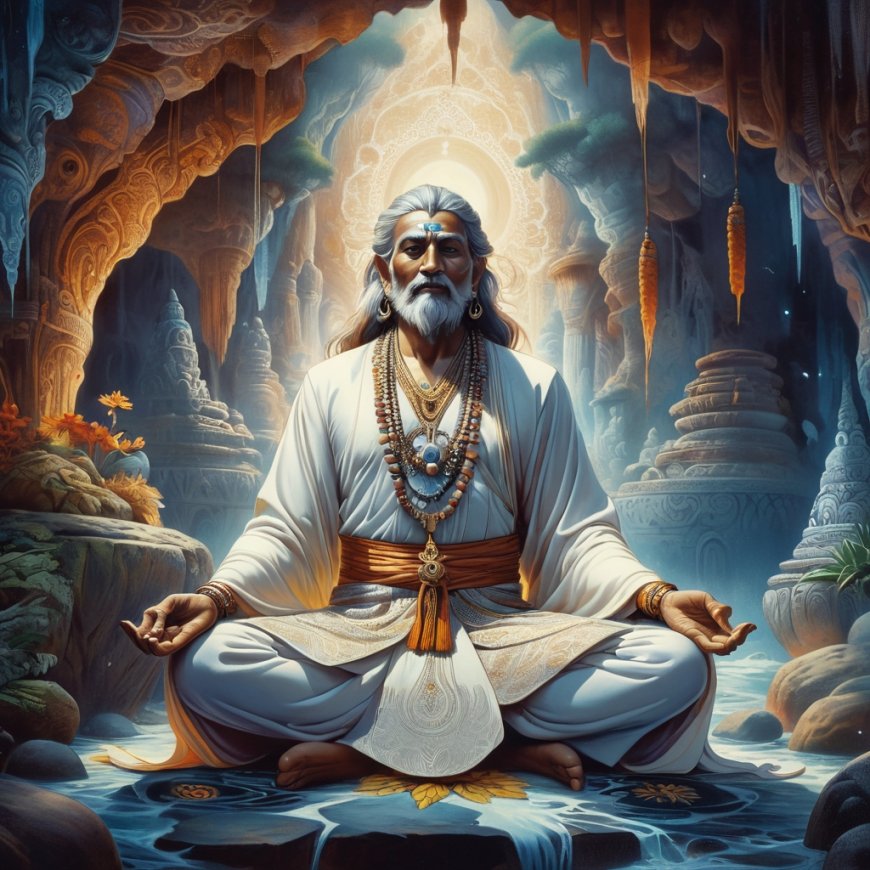
Sage Vyasa praying to God to change the flesh in each jar to become a baby (source : private collection)
Before composing the Mahabharata, Sage Vyasa organized the ancient Vedic knowledge into four main collections, known as the Catur Vedas, with the help of his disciples: Sage Pulaha, Sage Jaimini, Sage Sumantu, and Sage Vaishampayana.
The great Bharatayuddha war then took place. Sage Vyasa, living in a forest directly across from the battlefield of Kurukshetra, became a living witness to the war between the Kuru family, a war driven by the throne of the Hastinapura kingdom. He witnessed all that transpired during the battle, including the sacred teachings of Sri Krishna to Arjuna.
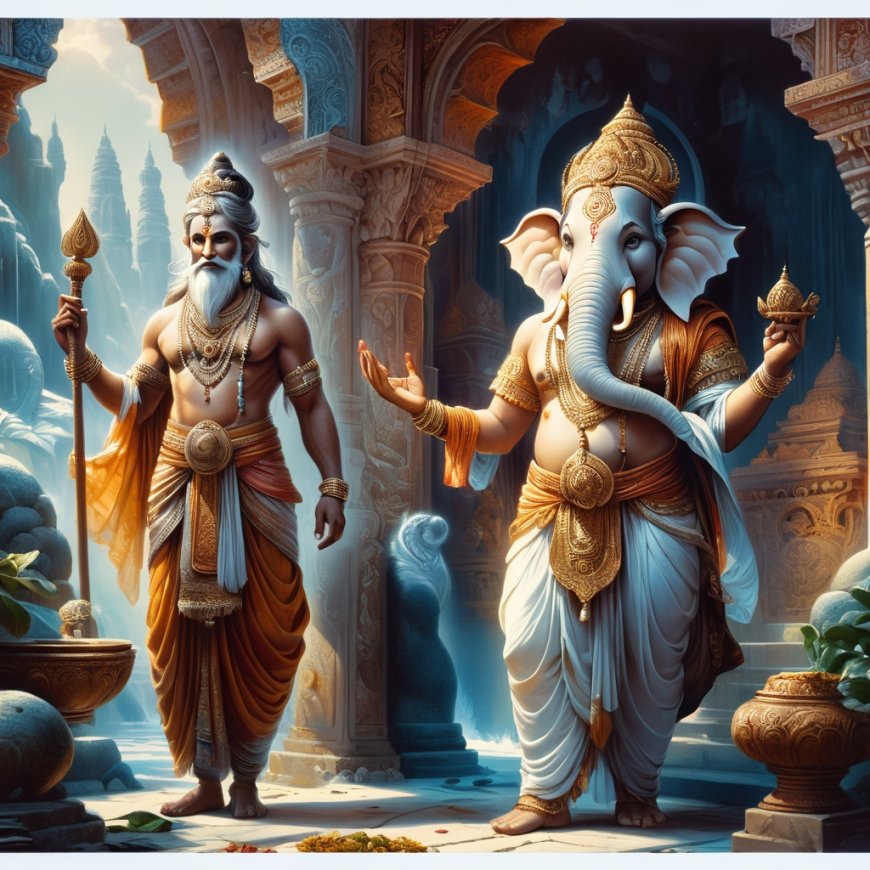
Sage Vyasa telling Lord Ganesha the story of Mahabharata (source : private collection)
In the spirit of dharma and knowledge, Sage Vyasa decided to immortalize these events in written form. He hoped that the future generations would read these grand stories and use them as a foundation for leading a righteous life. With the help of Lord Ganesha, who acted as his scribe, Vyasa dictated every event that befell the Kuru family and preserved the teachings of Sri Krishna, which are now known as the Bhagavad Gita, a scripture containing universal wisdom about life. Eventually, this led to the creation of the Mahabharata, which still exists today.
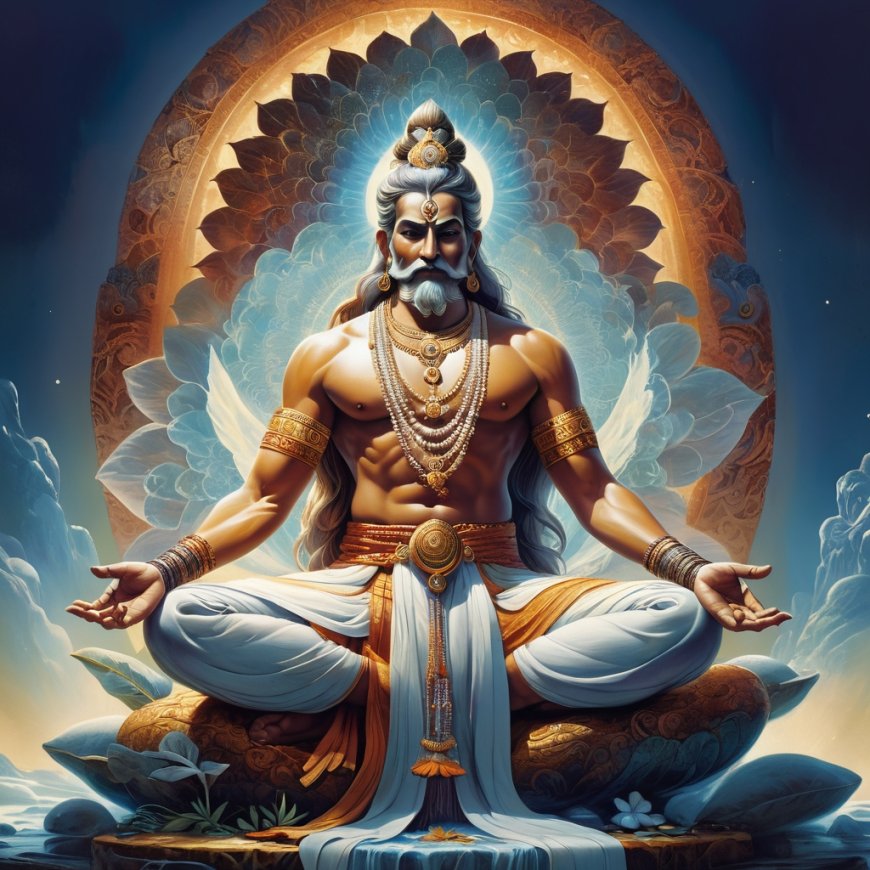
Sage Wyasa as one of Lord Vishnu avatar (source : private collection)
Sage Vyasa’s contributions as a teacher and role model are remembered by future generations. Although he was an avatar of Vishnu who did not directly vanquish evil like Rama or Krishna, Vyasa is revered for spreading goodness and knowledge. Upon his death, he attained Moksha, reuniting with the Supreme Being.



































